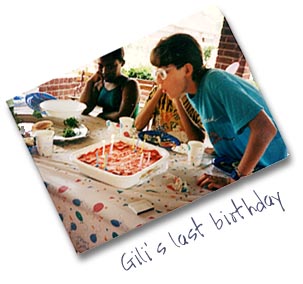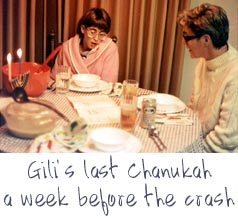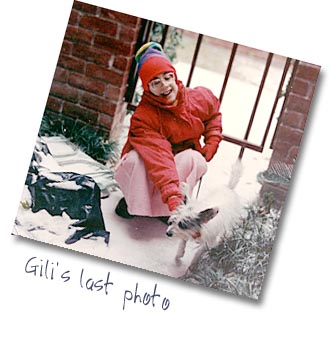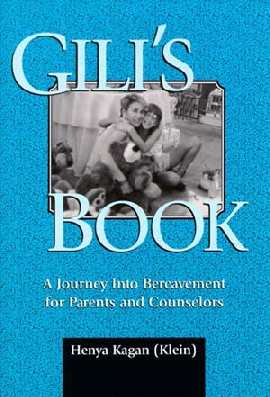 Articles on Grief and Healing
Articles on Grief and Healing Articles on Grief and Healing
Articles on Grief and Healing

On Keeping Belongings - The 10th Anniversary of Gili’s Death. By Henya Kagan (Klein) Ph.D.
Looking at these last photos of Gili, I feel compelled to share with you some thoughts about ‘lasts:’
If you ask a bereaved parent: “What would you have saved first (assuming that there were no people nor animals in the house) if your house was caught on fire?” My guess is that the parent’s response would be: “I’d try to save my (deceased) child’s belongings.” Ask the same question a non-bereaved parent, or anybody else, and you’ll get a completely different answer.
 Why? Because the bereaved parent
is left with ‘lasts', with ‘neverness’. While the
non-bereaved parent will be able to take more photos of his or
her children, to buy them more clothes, to receive from them
another birthday card or Happy Mother’s Day card. There will
be no photos again, ever for the bereaved parent. The clothes
that your child last wore, are the last ones he or she will ever
wear. Your child will never draw another picture, never write
another letter, listen to the tapes or CD’s he so
meticulously collected. Your daughter won’t use her
hairbrush, toothbrush, or hold her favorite stuffed animal in her
arms. You are left with these ‘lasts.’
Why? Because the bereaved parent
is left with ‘lasts', with ‘neverness’. While the
non-bereaved parent will be able to take more photos of his or
her children, to buy them more clothes, to receive from them
another birthday card or Happy Mother’s Day card. There will
be no photos again, ever for the bereaved parent. The clothes
that your child last wore, are the last ones he or she will ever
wear. Your child will never draw another picture, never write
another letter, listen to the tapes or CD’s he so
meticulously collected. Your daughter won’t use her
hairbrush, toothbrush, or hold her favorite stuffed animal in her
arms. You are left with these ‘lasts.’
Each object – a symbol, not a replacement, of your child who once touched it or produced it. You can put your hand on the place that once was touched by your child, and symbolically your hands now touch. This ‘neverness’ then, for a fleeting moment, becomes more tolerable.
We need to touch something concrete. We need to hear and see something concrete. Concrete means ‘real.’ Although holding these concrete-real objects evokes pain, it nevertheless provides comfort as well. After all, we are concrete entities, and we are parents who have a lifelong attachment to our children, alive or dead. This attachment to the child is expanded once this child has died, to the objects that represent him or her.

Keeping these
last belongings – all or some – are important then to
the bereaved parent. The attachment the parent feels toward these
objects, which became symbolic representations of the deceased
child’s life and the relationship the parent had with this
child, enables the grieving parent to transcend his or her pain
into a more evolved level of grieving. Which in turn facilitates
the process of readjustment to living in this new reality.
Henya Kagan (Klein), Ph.D.
Copyright 1999 Henya Kagan (Klein)
 |
Henya Kagan (Klein) Ph.D. is a bereaved mother, widow, psychologist, author, and speaker. You can learn more about Henya at www.kaganklein.com. Or visit her site honoring her daughter Gili's Place. Her book Gili's Book: A Journey Into Bereavement for Parents and Counselors can be purchased through amazon.com |
[home] [comments] [column] [discussions page] [book excerpts] [honor page]